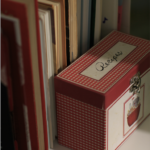This story was first published as “The Right to Free Speech: Vintage printing presses in Cape Girardeau tell history of written word” in the July 2021 issue of “The Best Years (TBY).”
By Jasmine Jones
Vandercook. Chandler & Price. Heidelberg. For most, these names mean nothing. For past editors, these printing press brand names meant the ability to press stories onto paper, to share the news of the day as they wrote the first draft of history. For printmaking professor Hannah March Sanders and her students, these names are a way of artistic expression.
These three names represent half of the printing presses housed at Catapult Creative House, a partnership between Southeast Missouri State University and rustmedia that provides a collaborative space at 612 Broadway St. in Cape Girardeau for students to work on artistic and entrepreneurial projects, including managing a coffee bar, art gallery and print shop.
Most of the presses at Catapult were unearthed from storage spaces across the Midwest after decades of gathering dust as modern technology took over commercial printing. For example, the Vandercook, originally used to proof newspapers, was brought in from a publisher in Kansas. Now, the same flatbed press is used to print art posters and other unique creations.
Creating a print, according to Sanders, starts with going through the Type Bible Catalog. This binder catalog contains all of Catapult’s available image blocks, which are used to print an image on paper, and if none suffice, students carve their own image block out of wood. After choosing each block, it is locked in a chase. From here, rollers grab fresh ink off the plate while the plate rotates. This process continues as the blocks press their design onto the once-blank poster, card or fabric.
“Setting up takes the longest,” Sanders says. “Printing takes almost no time, and cleaning up takes some [time].”
The time required for printmaking is worth it for Sanders and her students. Ryan Nevill, a senior art student, believes printmaking is a unique and rewarding medium.
“It’s the process [and] tactility of it,” he says. “You’re making stuff with your own hands rather than just letting the machine do it.”
This is a statement echoed throughout the world of letterpress and printmaking. Gary Rust II, director of Rust Communications, assisted Catapult in acquiring the printing presses. Being in the newspaper business, Rust has always had a love for letterpress, specifically linotype, which the Southeast Missourian was printed on until the 1970s.
“It’s something that is more tactile — you get your hands dirty and understand that whole process,” Rust says. “Each print is unique. It’s like a thumbprint.”
Eric Woods, who refurbished some of Catpult’s presses, specifically the Chandler & Price, believes there is a deeper reward in learning how to operate the large, historic machinery.
“The presses take you back to a time when you had to have a certain amount of skills in order to run these machines. It’s not like a photocopier where you just press a button,” Woods explains. “With these presses, you have to spend time with them.”
The printing presses are complicated, not only due to their age and size, but because their operation was meant to be a profession. Many of the printing presses approach 1,800 pounds, and as Woods says, “Their action will smash your finger and crack your bones.” The presses are serious instruments meant to be studied, and the reward for those studies is a quality print.
In the past, printing presses were the primary way of sharing information. Now, with digital publishing and the internet, the way information is shared has changed; with the click of a button, writers can instantly publish stories, making them available to millions of readers. Still, many printmakers believe vintage presses hold relevance in the distribution of information.
“People have started to realize the importance of hand-printed stuff [in] making a big impact or statement as opposed to a chain email that gets lost,” Sanders says.
This statement reiterates the power of printed text. Catapult Creative House is trying to bring this power back to Cape Girardeau with the incorporation of art and design. Some local businesses have recognized this and request custom posters, postcards and greeting cards from the press.
Through the windows of Catapult, the vintage presses may look like complicated pieces of metal, but within, they speak of a history of printed publication, art and expression. Even the history of Cape Girardeau is represented in the cards printed by art students, as many of the text and image blocks come from Kent Library’s archives. These blocks, once used in the Southeast Missourian or commercial printing operations, continue to be part of the city’s history at Catapult.
“[Printmaking is] an art that incorporates history,” Nevill says.
The vintage printing presses at Catapult demonstrate one thing: words are powerful, both for telling stories and creating art. Most of all, these presses show there is something valuable in holding a work in one’s hand, sitting it down on a table and having it take up physical space. Printing presses provide words that won’t disappear with the close of a computer tab or the tap of a cell phone. Printing presses provide artists the option of creating something real with their two hands, the option of creating something tangible out of nothing.

